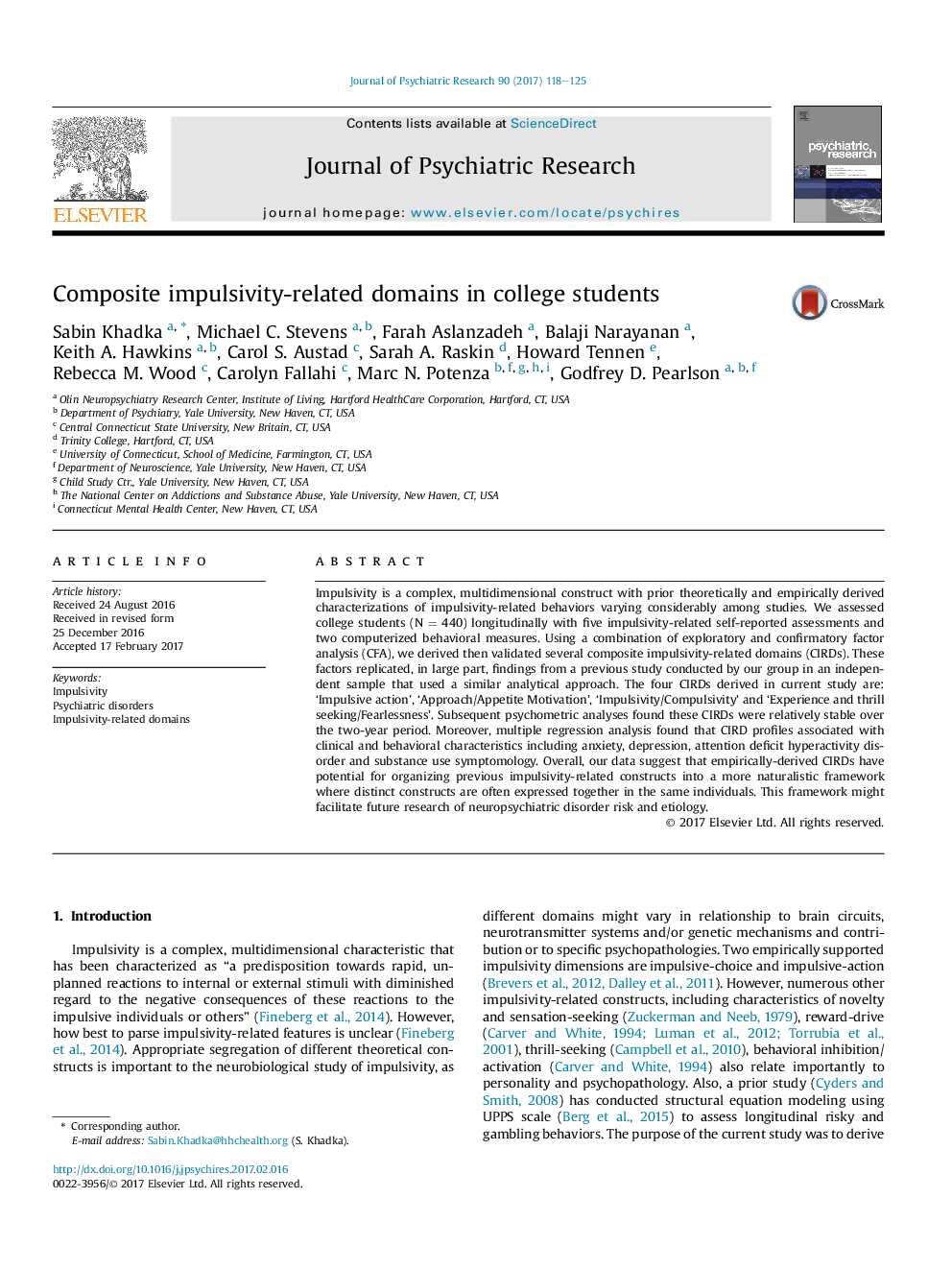ترجمه فارسی عنوان مقاله
حوزه های مربوط به امتداد کامپوزیت در دانش آموزان کالج
عنوان انگلیسی
Composite impulsivity-related domains in college students
| کد مقاله | سال انتشار | تعداد صفحات مقاله انگلیسی |
|---|---|---|
| 122228 | 2017 | 8 صفحه PDF |
منبع

Publisher : Elsevier - Science Direct (الزویر - ساینس دایرکت)
Journal : Journal of Psychiatric Research, Volume 90, July 2017, Pages 118-125
ترجمه کلمات کلیدی
تکانشی، اختلالات روانی، حوزه های مرتبط با امتزاج،
کلمات کلیدی انگلیسی
Impulsivity; Psychiatric disorders; Impulsivity-related domains;

